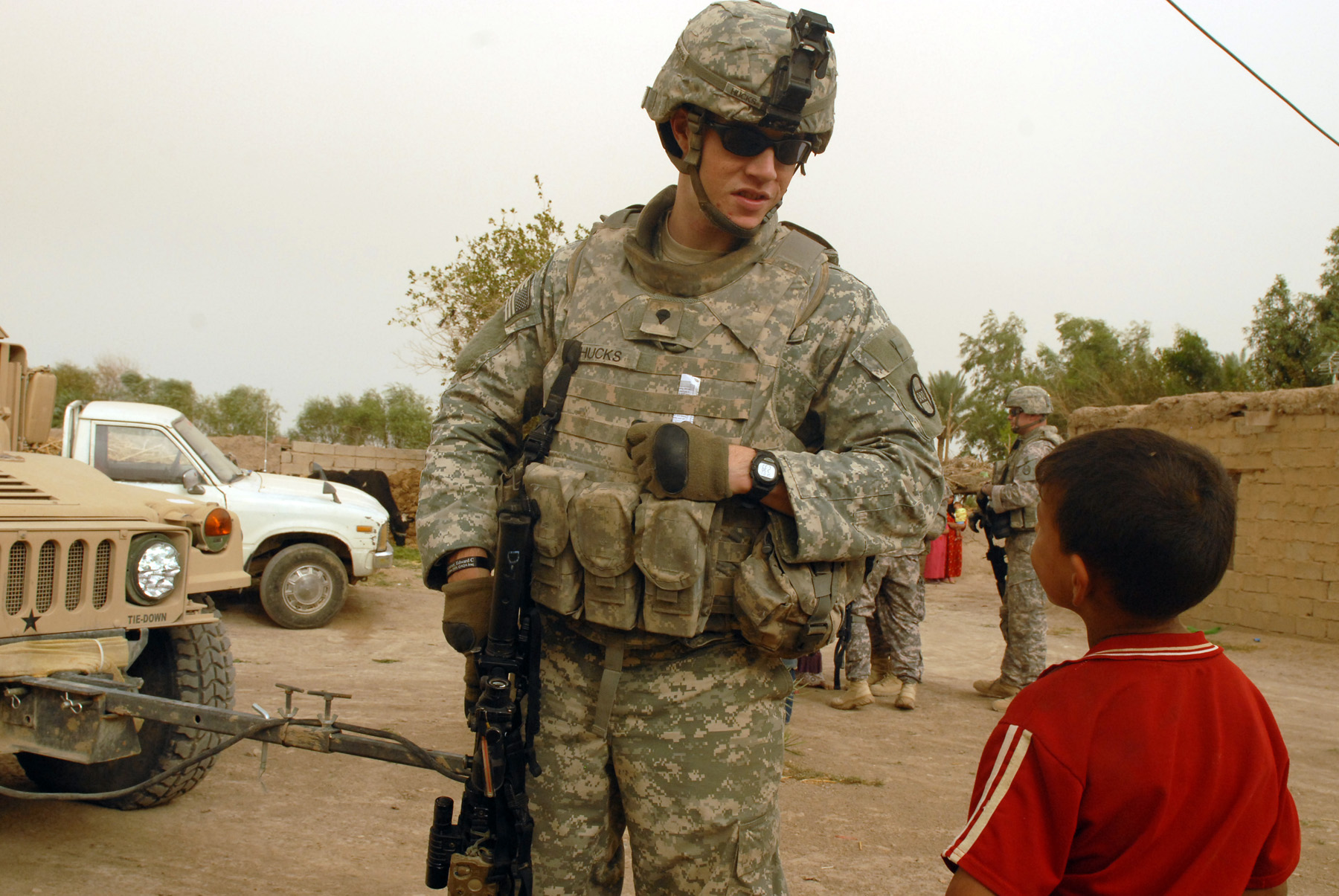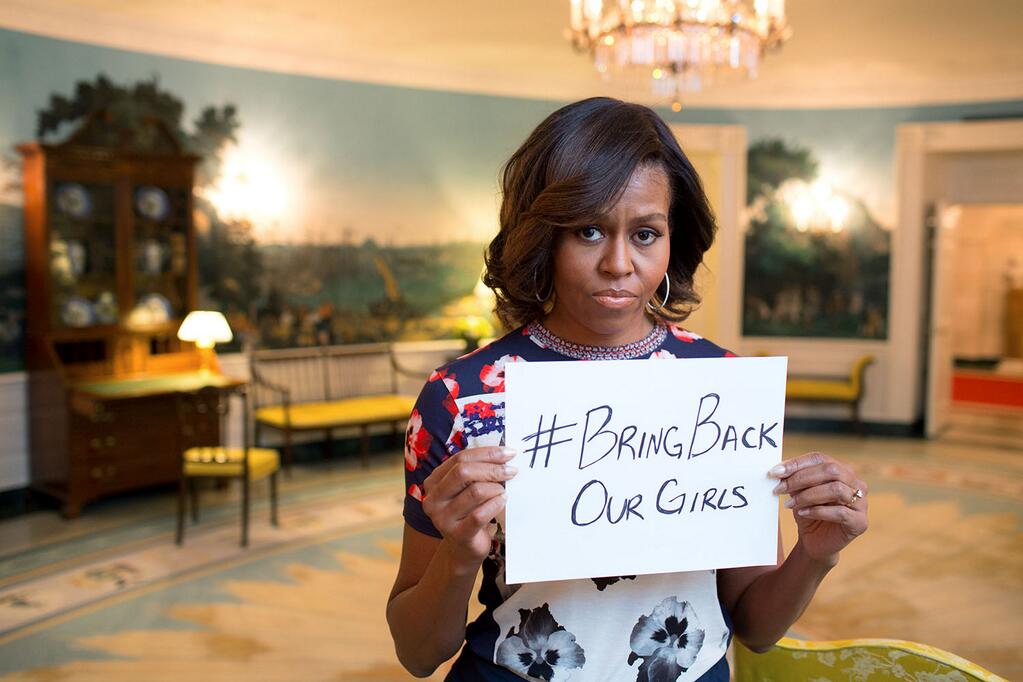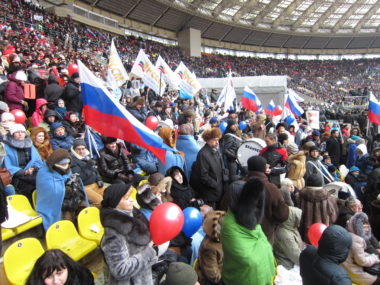
Last week ProPublica carried a post decrying wasted US tax dollars on “Hearts & Minds” programs in Afghanistan, and the White House’s Countering Violent Extremism (CVE) program attracted some positive buzz for its college student social media campaign and other attention here, here and here. It got me to thinking about what we know about winning hearts and minds. So I put the question to several of our regular contributors, and this is what I learned.
Barbara F. Walter observes that “academics and policymakers do not agree on what they mean by ‘winning hearts and minds’.” That certainly makes communication challenging. She continues:
Does it mean that the local population starts to support you? Does it mean that they target you with less violence?
And that’s not the only difficulty.
There’s also no agreement on how exactly you achieve these goals. Does the U.S. win hearts and minds in places like the Middle East through large public works projects? By increasing development aid? By providing order and security? By handing out food? By doing nothing?
Note that this references half of the issue as framed by last week’s stories: we tend to think of “hearts & minds” as a counterinsurgent issue “over there,” but the CVE program features a partnership between federal, state and local US law enforcement who are expected to actively engage community leaders. Just as they did during the Cold War, US government officials are defining “winning hearts & minds” as both a domestic and an international issue. Many other governments have done the same.
When I read about such policies I can’t help but wonder whether Sir Robert K. Thompson might roll in his grave and wonder “What’s wrong with good governance?” (i.e., are special programs required to offer “them” constituent service, and if so, what does that say about the quality of our democracy?)
But I digress.
Walter‘s point is important, and she closes with this kicker:
Even if we could agree on what we mean by the concept, we have no systematic evidence of what works and what doesn’t work, and under what conditions.
She overstates the case, for effect, but we do have precious little systematic evidence. What we do know is nicely summarized as four key lessons here, and Walter summarizes thusly:
Small scale development projects that were carefully planned and targeted did appear to reduce violence in these countries, but many other types of intervention tended to increase violence.
Paul Staniland agrees, and suggests that a focus on “hearts & minds” may have us missing the key issues in active conflicts “over there”:
Hearts and minds likely “matter” in some background way, but nitty-gritty variation in conflict dynamics seems to be driven more directly by the balance of military control, organizational discipline, and institutionalized social mobilization.
He elaborates:
Rather than trying to win over “the population” writ large, insurgents and counterinsurgent tend to be more effective when narrowly and selectively trying to manipulate the behavior of specific individuals, networks, and organizations. Providing public goods doesn’t do much, because by definition they are accessible to everyone regardless of their attitudes or behavior, and providing club goods inevitably requires a substantial degree of surveillance, population control, and coercion that quickly blends into large-scale, militarized state-building.
That is, if we target sub-populations perceived to “be at risk” to insurgency, that tends to come part and parcel with the type of policing played out in Boston this week, thus minimizing, and possibly canceling out, the positive effects.
Joe Young notes that “what we know is bad for winning hearts and minds is indiscriminate repression.” Staniland’s observation suggests that the “stick” is generally part and parcel to the “carrot,” and whether played out “over there” or “at home,” policing has a tendency to become indiscriminate.
Page Fortna continues this line of inquiry, pointing out that terror tactics are “bad for winning hearts and minds,” and as her research shows, “that’s a big reason rebel groups that use terrorism are less likely to succeed (either to win outright, or to achieve a negotiated settlement).” On the government side, Gil Merom has argued that only dictatorships are able to avoid this trap.
Allison Beth Hodgkins offers some insight to the criticisms leveled in the ProPublica piece, and emphasizes the importance of execution after a “hearts & minds” program is adopted. In particular, culture clashes across government agencies and contractors are a problem:
While they work together, each one has a bureaucracy or agenda behind them that is intuitive to them but opaque to the other. So expectations are often mismatched and communication misinterpreted…it’s kind of like two mismatched gears spinning in opposite directions – they don’t mesh together, rather grind or fly off each other until one is ground down enough to latch.
She also notes that “good old fashion greed and corruption… and not always on the part of the “locals”” do their bit to undermine these programs. In brief: banal bureaucratic politics and the challenges of public-private partnerships need to be considered when we assess “hearts & minds” programs.
Stephen Saideman argues that “it really is not about hearts and minds but about confidence,” by which he means peoples’ beliefs about the future. When a government has a history of failing to provide people with constituent services, a new program will be viewed as a temporary fix that won’t last long. In the “over there” context this is especially pernicious:
A foreign country performing counter-insurgency will eventually/always leave, so their ability to gain the confidence of the local populace is limited; and a foreign intervention is taking place precisely because the indigenous government has failed to provide security.
I will observe that the government in Baltimore, for example, also faces this dynamic.
Saideman’s research suggests that striking this balance is key:
A government that is competent and able enough to use force to deter the potential/actual insurgents while being restrained enough to reassure the population that whatever force that is used is used only against those who violate the bargain.
That point seems to apply equally well “over there” and “at home.”
In closing, I return to Walter:
Should we abandon the idea of winning hearts and minds? No. But we should be very conscious about how little we know and realize that intervention often does more harm than good.
@WilHMoo








13 comments
Twenty years ago two prominent economists attempted to operationalize the concept of winning hearts and minds: Janet Yellen (now chair of the Federal Reserve) and George Akerlof (Nobel laureate in economics and Yellen’s husband) wrote an essay (“Gang Behavior, Law Enforcement, and Community Values,” in Values and Public Policy — Henry J. Aaron, Thomas E. Mann, and Timothy Taylor, editors, Brookings, 1994) arguing that the police win the hearts and minds of a community when community members become more inclined to support the police and other formal institutional mechanisms for controlling illegitimate behavior and less inclined to view official authorities as aliens invading and disrupting the community. Support of the police can be inferred from revealed behaviors, like rates of reporting crimes to the police, and from community surveys. Their work has little immediate relevance to the problem of international terrorism, but it may be relevant to dealing with domestic terrorism in the US and elsewhere. Akerlof & Yellen provided a more coherent rationale for community policing than had been offered by criminologists, but it went largely ignored.
Back in the early ’60’s (no one will say when because the books in question are still classified), the DoD commissioned two studies about asymmetric warfare. One – Leites and Wolf’s Rebellion and Authority – was released and has been used by militaries around the world ever since. What they said, in general, is that defeating any insurgency is a matter of raising the costs of resistance to a level that the insurgents wouldn’t pay. This is still the way most people facing an insurgency think about it; it’s simple and it fits the tools they have (or think they have) control over.
The second was Oregon Trail, a two part, six volume study by a committee of historians. This entire study is still classified, though the Federation of American Scientists has a re-classification request in on it. As Freeman Dyson (Rand got him to read and comment on the studies) says in this review of Malcolm Gladwell’s recent book on the subject (http://www.nybooks.com/articles/archives/2013/nov/21/how-to-be-underdog-and-win/), Oregon Trail echoes the scholars above. The question in the 100 asymmetric wars examined was whether the government could figure out why the insurgents were able to convince people to support them and offer an alternative. If it could, there was a good chance that they would win. If they didn’t, they inevitably lost. And the more military power was used to substitute for political action, the lower the government’s chances were.
So why this story, if it simply re-caps those above? Because one of the major scholastic studies on the whole subject of “winning hearts and minds” is still classified! Thinks of how much we could learn from this gigantic mass of data about the subject that puzzles us above. I’m keeping up with Oregon Trail myself. If the FAS does get it re-classified, I’ll let people know. If you want to write the DoD about this (I did and they said they were thinking about it), the actual title is: Project OREGON TRAIL, Final Report, USACDC No. USC-6, February 1965. Volume 1, Main Report, TOP SECRET RD. The second part has details of the war games they used at Rand. That’ll probably stay secret.
“Winning hearts and minds” when the government, shadow government, or insurgent force is able to take care of the citizens and give them basic needs; food, water, social services, etc. The authors of the titled paper Winning Hearts and Minds? Evidence from a Field Experiment in Afghanistan stated that the Afghanistan’s National Solidarity Program (NSP) “… improves the attitudes of the civilian population toward the government and makes them more likely to think that the government is working in their best interest.”. This could be a model of how other nations could win back the support of the people’s hearts and minds. Now taking all this into account; an outside force conducting these projects for another country or region need to have the face of the host region or country government on the projects or the projects have been done for nothing.
The United States and its Coalition partners attempted to win the hearts and minds of the Iraqi people by providing security and support to economic and political reform programs. However we quickly realized that we were up against an enemy that was determined to fight by providing fear and intimidation to the people. Christopher Shays (R-CT), Chairman of the Subcommittee on National Security, Emerging Threats, and International Relations held hearings on June 15, 2004, with the aim of determining “corrective actions that might be undertaken to regain the confidence and cooperation (hearts and minds) of the Iraqi people, improve public diplomacy messages, and help chart the course for future efforts in Iraq. (Daily Digest, 2004) After underestimating our enemy and their resourcefulness due to the use of Psychological Operations (PSYOPS)we learned how to give the people what they needed and taught them to stand up for what is right. We did not gain the support of all the people however we had gained enough support from the people that we started to make a difference.
From a completely unscientific view, an uneducated person might guess that one way to win hearts and minds would be for the entity in need of love to establish its trustworthiness, which consists largely of delivering stability and prosperity from an impartial position. Two necessary aspects of this are (1) ability, and (2) integrity. If either is in question, the burden placed on the sales force may be very high.
Winning the hearts and minds of the people from countries that have a history of violence and oppression of its people is harder than actually winning a war. For example Afghanistan, a country who has a long history of being invaded by outsiders who have rode through the country killing and forced their ideology onto the people. The last violent extremists group that imposed their beliefs onto the Afghan people was the Taliban. By utilizing the Qur’an as a weapon to control the muslin community they were able to take over the whole country by fear. Coming from a violent pass trust is the last thing in an Afghan’s heart and mind. The road to winning the hearts and minds is a long one, and it gets longer when one of our service members commits an act the sends to square one.
I think its important to make that connection with the people you are working with, everyone has the same emotions mad, sad, happy or scared. If you can find a way to connect with people on a deeper level and show that they have some value, I feel like you can have a greater impact in winning their hearts and minds. By finding a way to make it a healthy combination of empathy and professionalism you have a better chance of finding that common ground and humanizing yourself. By being able to relate or understand the people the more of a relationship leading to their support. When working on projects, long term, in these communities while having the support of the people you have a better chance of making an impact and making a lasting impression so instead of viewing these projects as quick fixes, seeing them as opportunities to better the area. “When all is said and done, the real citadel of strength of any community is in the hearts and minds and desires of those who dwell there.” -Everett Dirksen
In my opinion winning the hearts and minds of the local populace should be used in conjunction with military operations in order to help stabilize the region. It should be a very well planned and organized event and should be targeted to the exact audience that should provide the most influence to the end state. There is talk in the article about whether or not these types of things work and are worth the money that the govenment puts into it, but the fact is, is that we have to attempt to cut of these VEO’s recruiting source and give the people a reason to strive for a legitamite means of work
I agree that an issue in the forming of an opinion on this matter, regardless of your affiliations to relative organizations/forces or lack of affiliation to same, is that your understanding of what it is to “win hearts and minds” is so very influenced by your the popular opinion within the relative demographic one is affiliated with. However, I think regardless of your understood definition or understanding of the methods of conducting such operations, the key factor is the human dynamic. What tends to stick with humans more than the spefics of what is said or done is how it made them feel. In the case of Iraq and Afghanistan, the individuals within the conventional forces engaged in “hearts and minds” type activities didn’t necessarily care one way or another about the people they were engaging. As a combat medic in a heavy combat brigade deployed from Iraq from 09′-10′, I was well aware that there was a common theme in perspective of the soldiers around me that these kinds of operations were not their job, not what they “signed up for” and not what they wanted to be doing. As they say, a bullet sounds the same in any language, meaning when you express negative emotion or perspective strongly, although the content is lost on the listener, the expressed aggretion is still evident. The same can be said about any other attitude or opinion. I think to have the types of impacts that matter, it comes down to the human dynamics of the feelings subsequent to the interactions that occur while the operations are being conducted. One is much likely to align with another if there is commonality and a perspective that there is care or concern for what matters to that individual. The success of these operations is hinged upon the ability of those actually carrying them out personally to at least engender the perpsective that what is being done is being done so with genuine care for those it is intended to effect.
In most cases I’m certain that the mission that’s being conducted, while “winning the hearts and minds”, doesn’t fully incorporate the things that are truly going to better the situation. It’s not that those things aren’t of important or that they don’t matter but more so because they’re often looked past (Iraq & Afghanistan). I do agree with the concept of “winning the hearts and minds” but I’m sure it’ll be more effective if you focus on gaining the support of the individuals that have the most influence and let them “win the hearts and minds” of the people.
@ Joshua Bray you’re dead on. Until that host nation is able to provide for itself and win the support of its people the cycle of foreign support is simply a never-ending cycle.
ProPublica posted, US wasting tax dollars on programs such as “Hearts & Minds” and Countering Violent Extremism in Afghanistan. Are we really wasting billions of dollars on the future of a country and possible ally? In my opinion, yes and no. Yes in the sense that wasting millions only for them to revert back to corruption and greed. However the benefit of spending billions far outweighs what can come of the future of a country such as Afghanistan. Stephen Saideman Says “it really is not about hearts and minds but about confidence.” I agree 100 percent with Stephen. If we as country and military can instill confidence in a HN government and population, this can have a exponential affect on the US’s pockets and bring stability and credibility to a country.
This article brings to light some tools at our disposal to be effective in “Winning the hearts & minds” of the populace. At the same time it becomes fully apparent this is not an easy task, and therefore, have counter negative effects if not executed properly. In other words, good intentions to win the hearts and minds can often have bad consequences because there is a disconnection between the planning process and the reality on the ground and the long-term consequences of our actions. Thus, any project aimed at creating stability and preventing conflict must be carefully planned and targeted and take into account the culture and conflict dynamics on the ground. This entails utilizing the strengths/resiliencies of the host nation community and their recourses to fund and man their own critical projects which address their greviences. This is form of empowerment that allows them to take ownership. There is specific targeting frameworks that can be utilized to create stability and prevent conflict in a sustainable way, one that enables critical and effective thinking and a deep understanding and knowledge of any culture and the nature of conflicts therein. It is only when our tactical efforts on the ground have strategic level effects have we truly done our job, and thus, fulfilled the duty entrusted to us. We must not deviate from this process and continue to learn how to master the human domain so we remain relevant in world in desperate need of our efforts. Those who say “winning the hearts and minds” is futile are wrong. You can’t throw out the baby with the bathwater. It is the right thing to do, it just needs to be done right. We have real examples of this that should continue to be emulated.